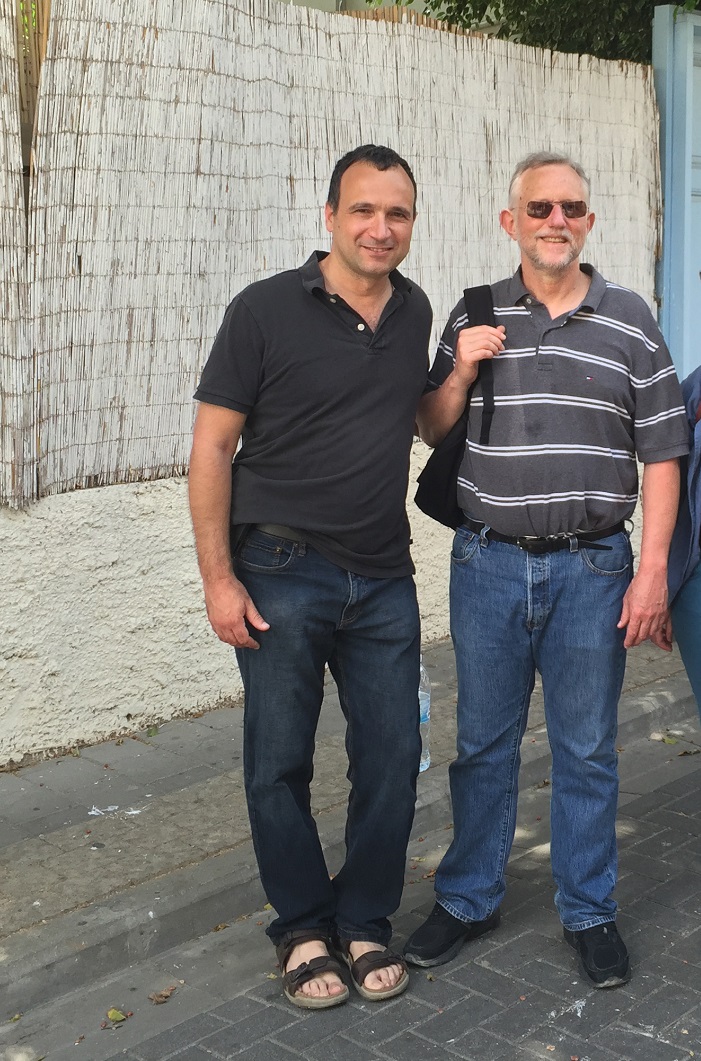
Leaders in hepatitis research join forces
An Israeli liver specialist teams with an American Nobel Prize winner to unlock connections between liver cancer and hepatitis B

The most common risk factor for liver cancer is chronic infection with the hepatitis B virus (HBV). Treatment of primary liver cancer is particularly challenging because it frequently involves patients with a severely damaged liver due to a long-standing viral infection.
As part of a BSF-funded project, two leaders in hepatitis research have joined forces to examine the connection between HBV and liver cancer, with the hope that their work will eventually lead to new drugs that will significantly prolong patients’ lives.
For the project, Dr. Amir Shlomai, who has studied hepatitis B throughout his career, and who heads the Department of Medicine and the Laboratory of Liver Research at the Tel Aviv University-affiliated Rabin Medical Center (Beilinson campus) is partnering with Dr. Charles Rice, the Maurice R. and Corinne P. Greenberg Professor in Virology at The Rockefeller University, whose pioneering work in discovering the hepatitis C virus led him to share the 2020 Nobel Prize for Medicine. (See adjacent article.)
Both hepatitis B and hepatitis C are viral infections that attack the liver. However, these viruses differ from each other in their structure and genome composition. In addition, people can get hepatitis B from body fluids of another person who has the infection or through a mother-to child transmission, whereas hepatitis C most often spreads through blood-to-blood contact.
Joint research to effectively treat hepatitis B
In their preliminary studies, Shlomai and Rice have found that HBV resists the treatment of sorafenib (Nexavar), which is the first approved drug for treatment of advanced liver cancer. Even with that treatment, patients rarely live longer than a few months.
This suggests that the virus may interfere in the mode of action of this drug. In their research, Shlomai and Rice are exploring the molecular mechanism by which HBV confers resistance to sorafenib. Such a strategy will point to important molecular pathways by which the virus interferes with host cell genes regulation to promote cancer.
They are using advanced technologies to study the effect exerted by HBV on cellular pathways which may affect sorafenib resistance. Shedding light on the mechanism of how HBV confers resistance to sorafenib may lead to tailoring the treatment of patients with HBV-mediated liver cancer.
“This work will promote our understanding of the link between HBV and liver cancer and will help clarify better targets for future drug treatments,” Shlomai said.
Blending specialties for a productive collaboration
Rice and Shlomai first worked together in 2012 when, after receiving his PhD at the Weizmann Institute and completing his residency in Internal Medicine and Gastroenterology and Liver Disease, Shlomai was accepted for a fellowship at Rice’s Rockefeller University lab.
“I heard so much about Charlie and it made sense for me to join his lab,” Shlomai said.
Shlomai expected to focus on hepatitis C, since that was Rice’s specialty. But Rice was already turning his attention toward hepatitis B, and he thought Shlomai was the right person to bring his knowledge of that virus to his lab.
“I thought he was a little crazy at first, but the rest, as they say, is history,” Shlomai said.
Shlomai and Rice have worked on several projects together, and in 2018, Shlomai came back to Rice’s lab for a sabbatical stint.
“I think Amir would have liked to have stayed longer in our lab, but he ended up getting recruited back to Beilinson Hospital and Tel Aviv University,” Rice said.
Even during the coronavirus pandemic, Rice and Shlomai continue their partnership via Zoom meetings and emails. Shlomai said that he hoped and expected that Rice would win a Nobel Prize. When he discovered that Rice was indeed one of the 2020 recipients, he was thrilled.
“I don’t remember the last time I was so excited,” he said.
Rice, for his part, credits Shlomai for most of their partnership’s success.
“He basically established the whole experimental system for hepatitis B research in our lab,” Rice said. “Given his additional clinical responsibilities, this ongoing interaction that we have with him has really been important for both of us.”
